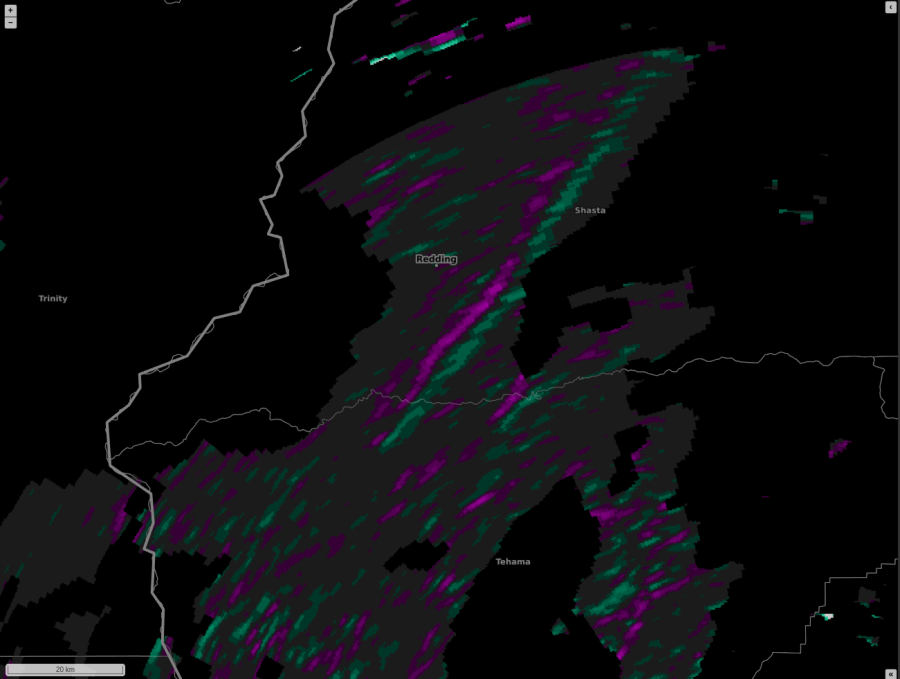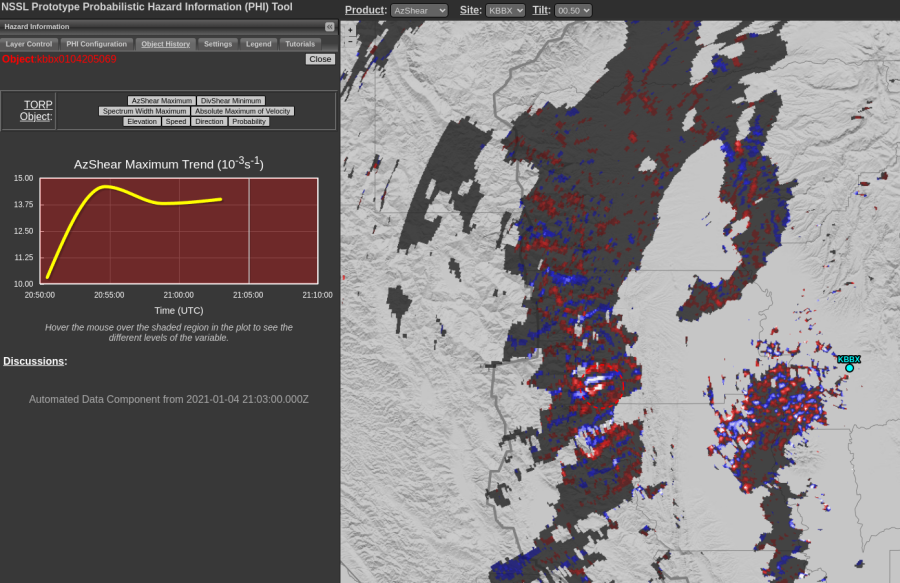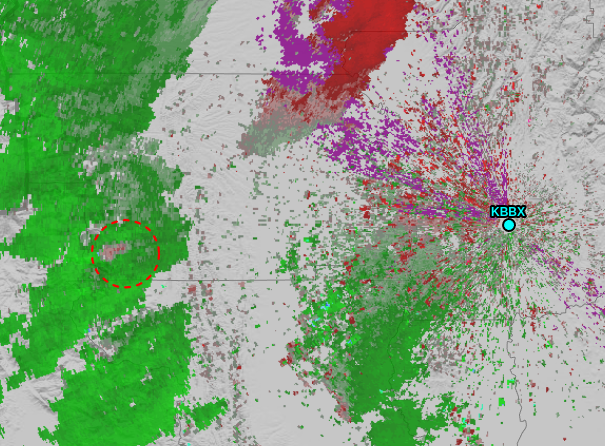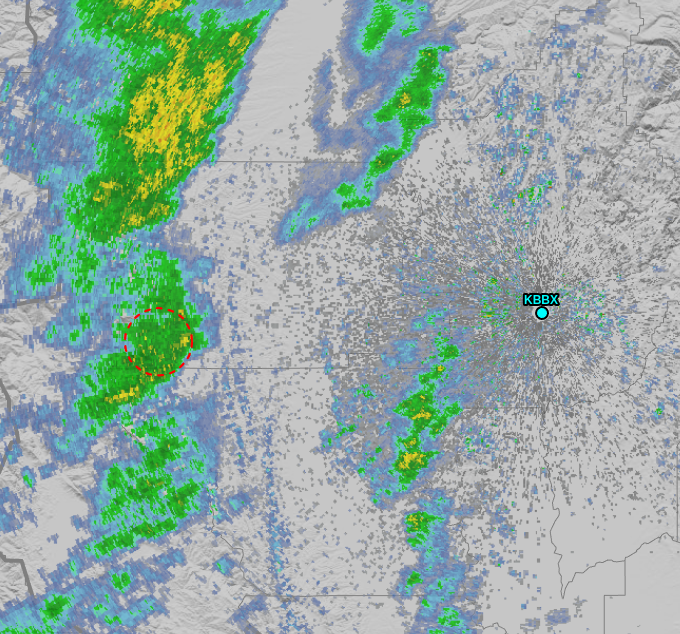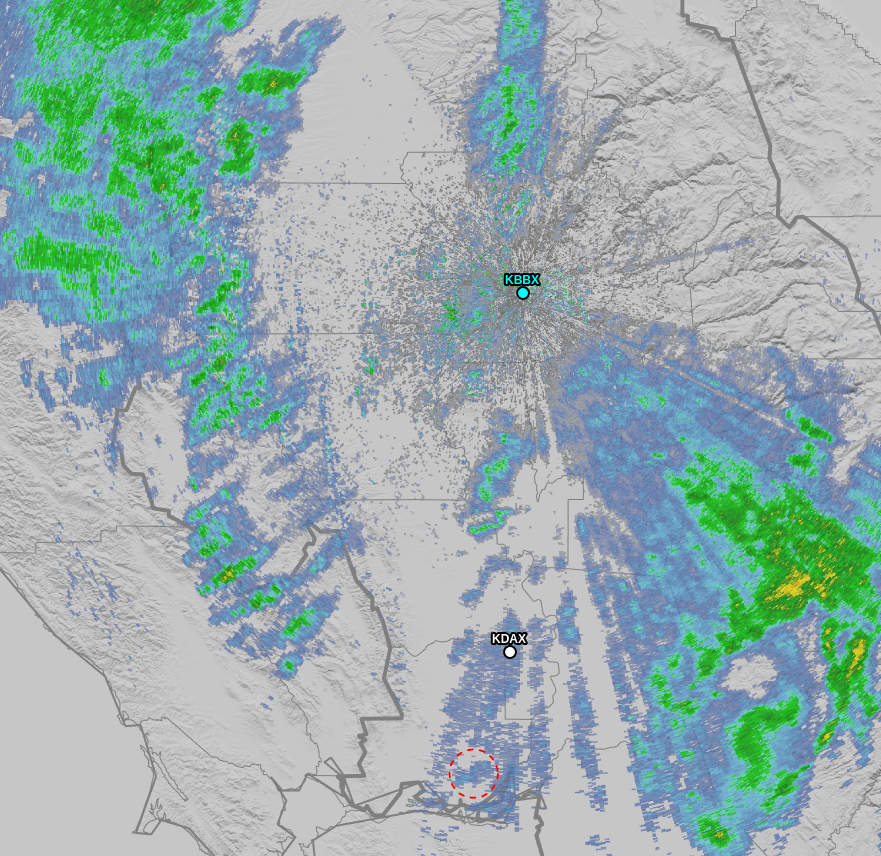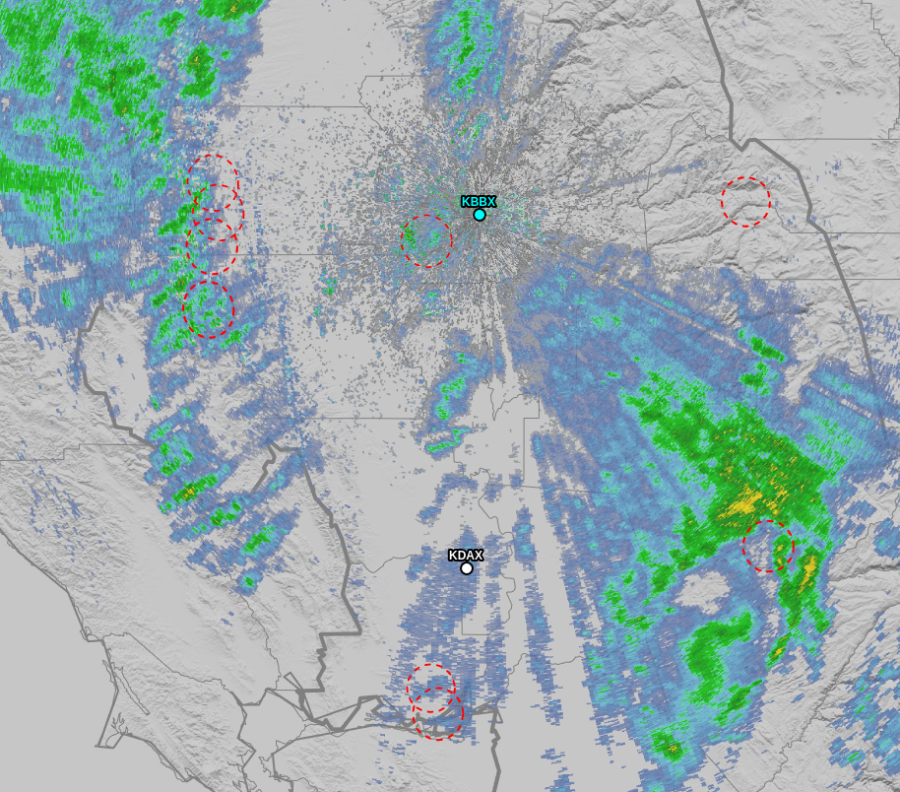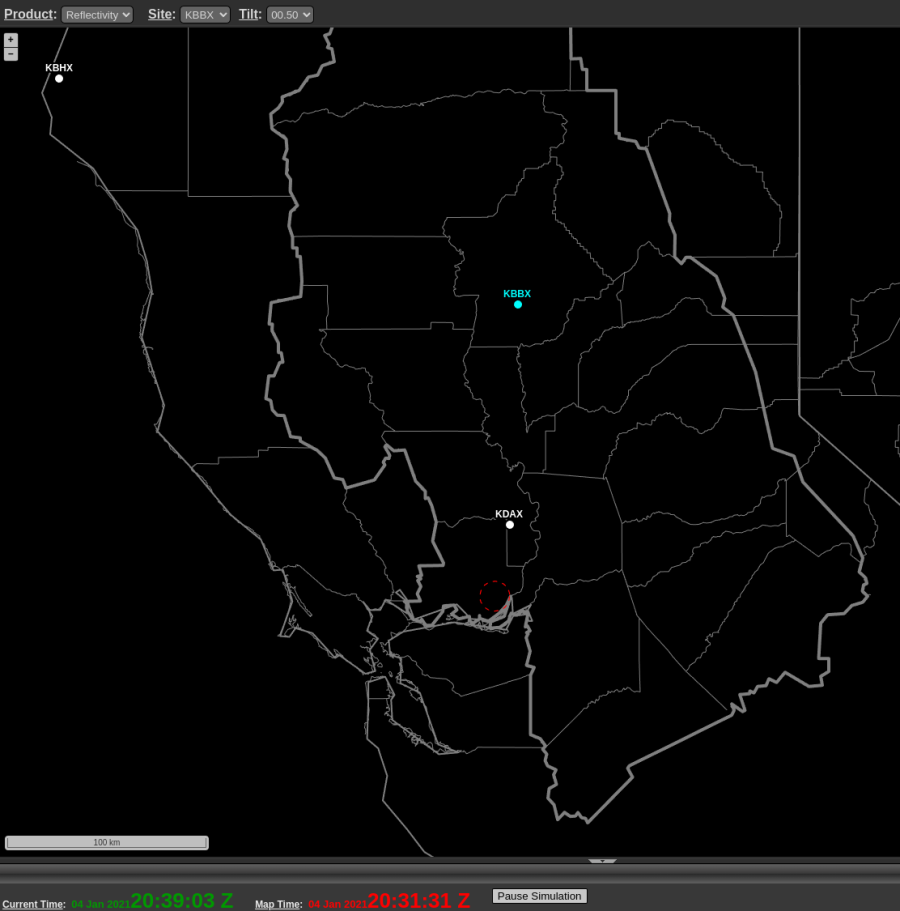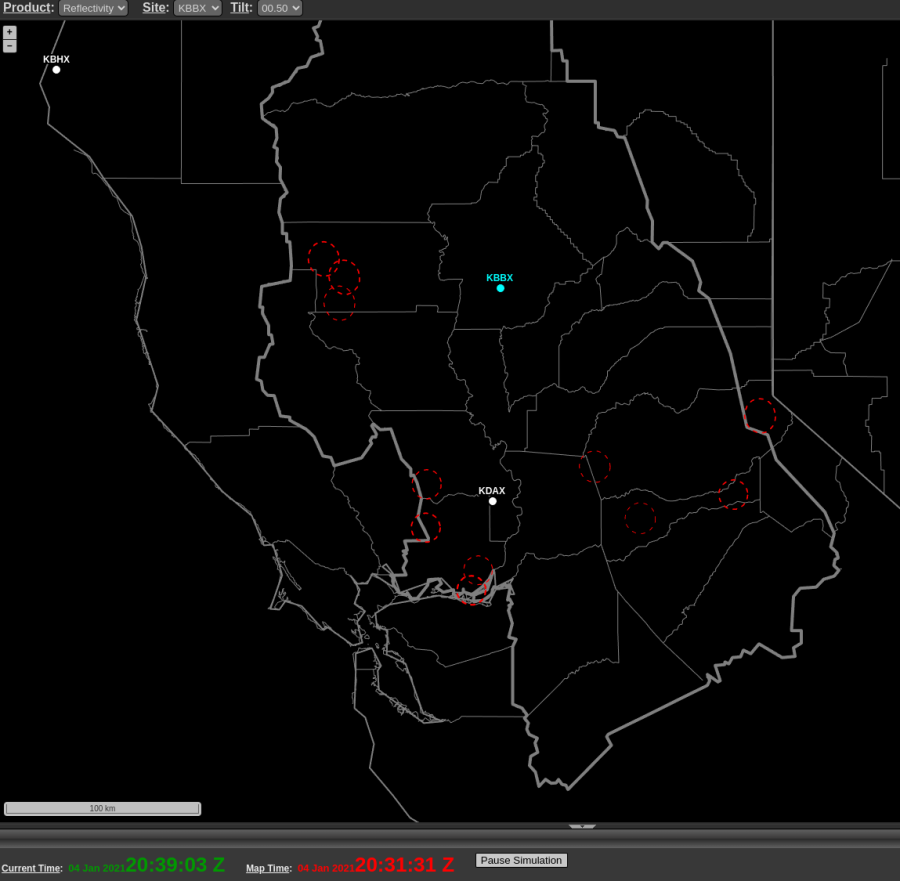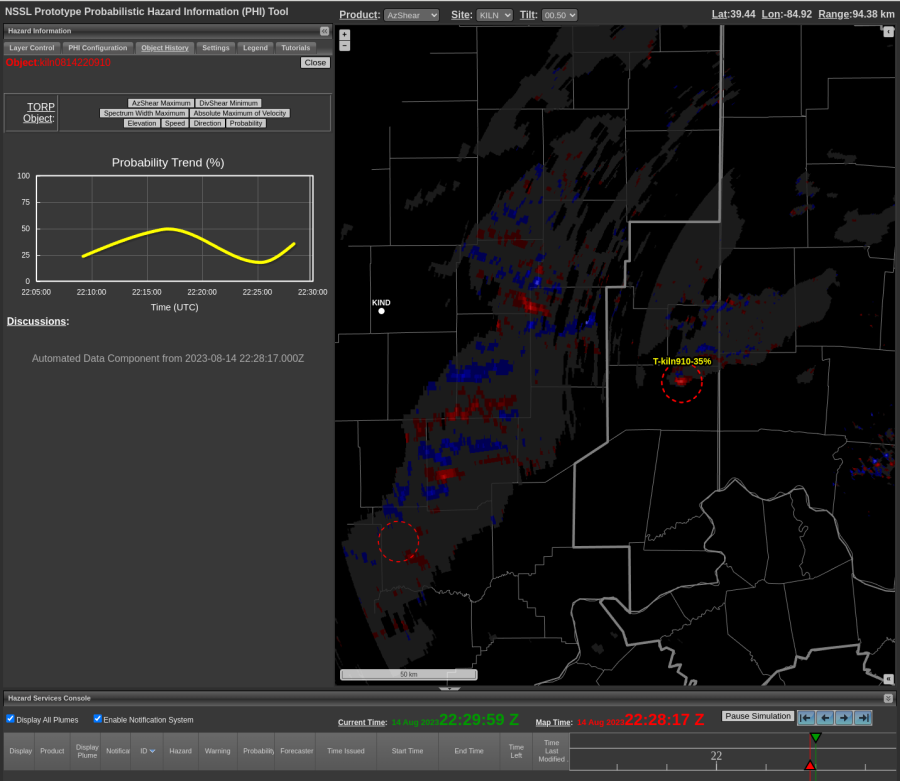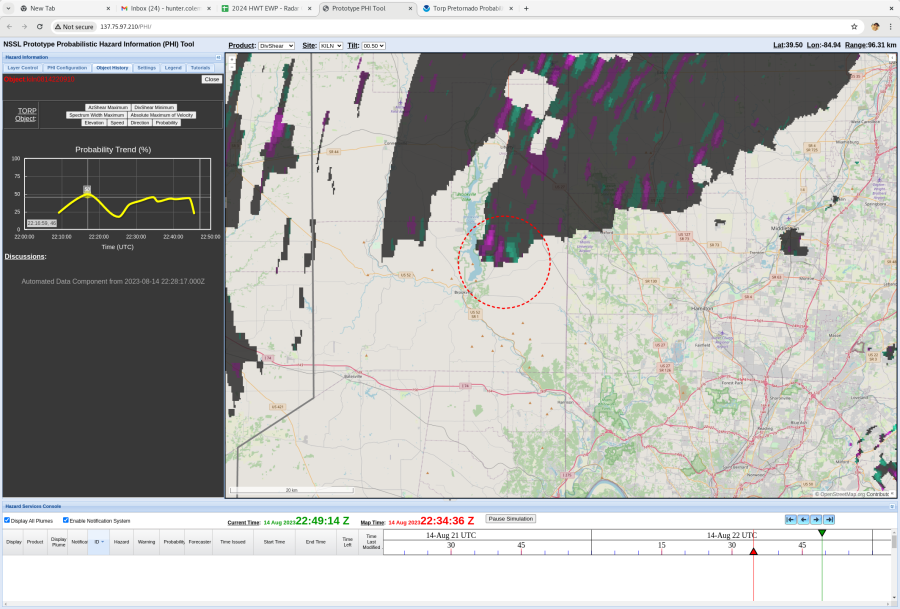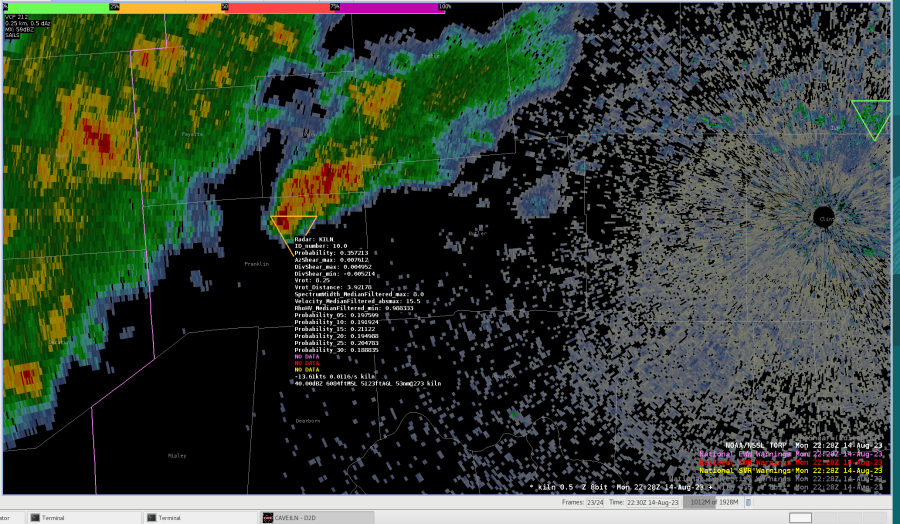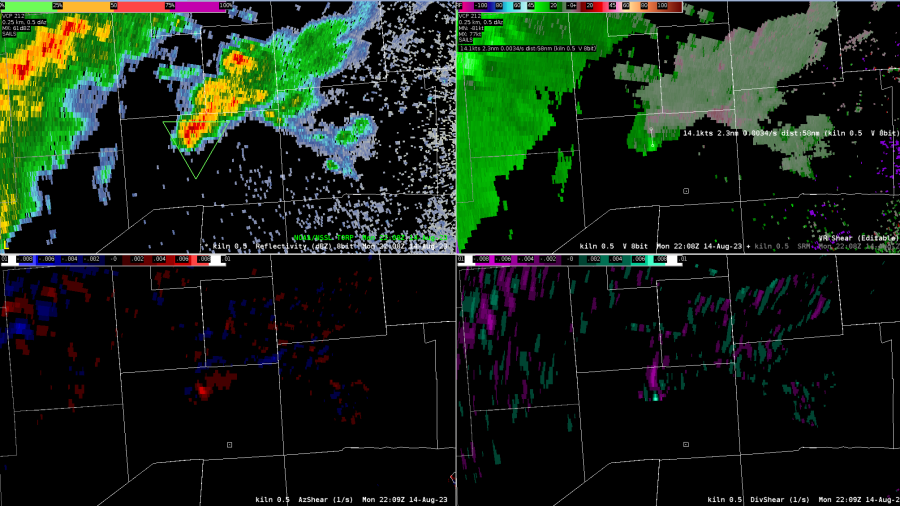I noticed that when the “Aggressively-Filtered” TORP objects (likely sampling mountain peaks) were displaying the 5,10,15-min tornado probabilities, they would decrease or jump around or increase. In all of the other cases, the probability seemed to only increase with the greater amount of time. Once we finally got a TORP object sampling a real storm off KBBX, the probabilities only increased as you got closer to the 30-minute time frame, matching what I would expect and what I was seeing in all of the other cases.
Kilometers

